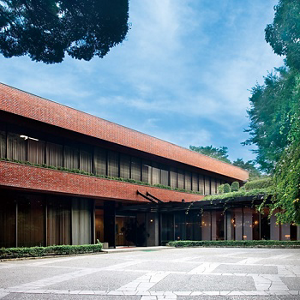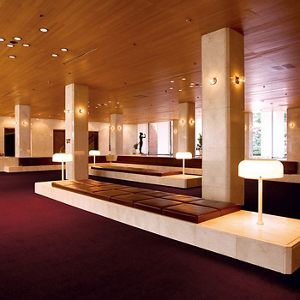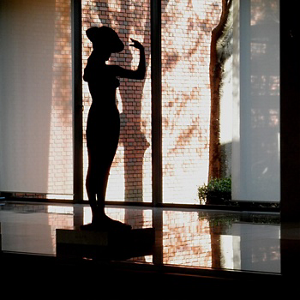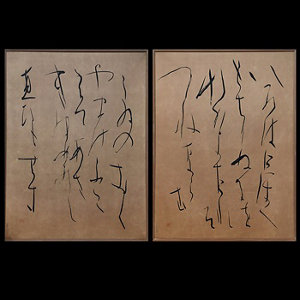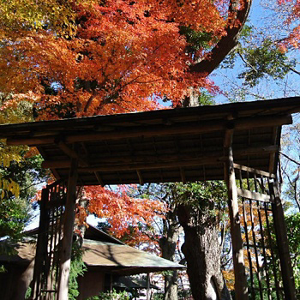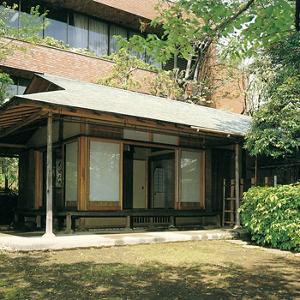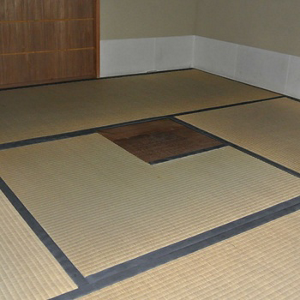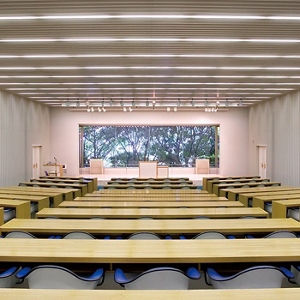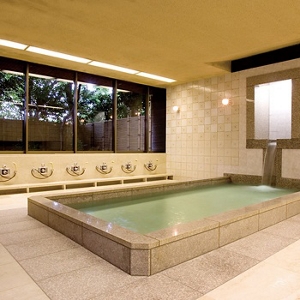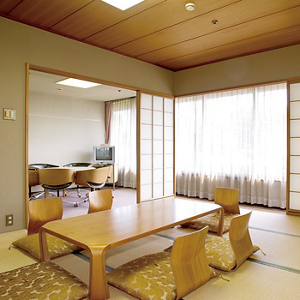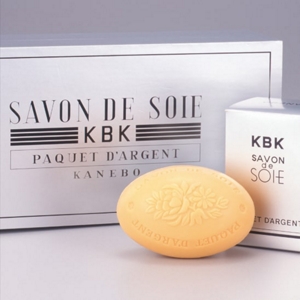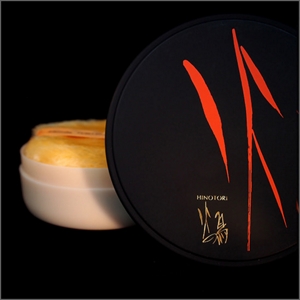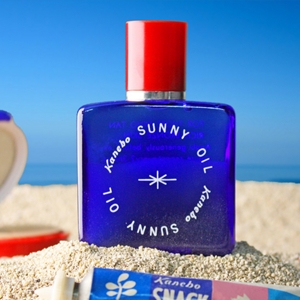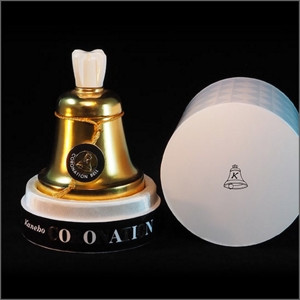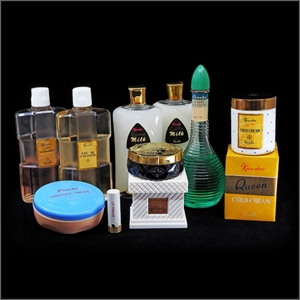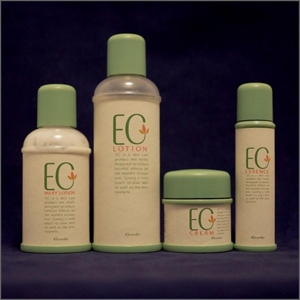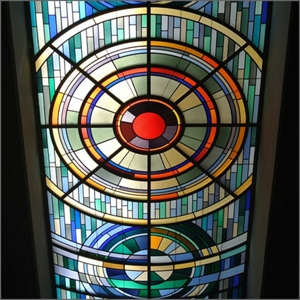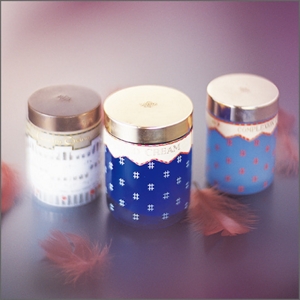Art, community, and care at Kanebo Cosmetics Education Center


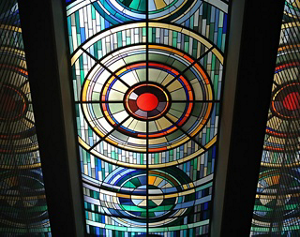
An iconic stained glass roof window at the Kanebo Cosmetics Education Center featured rings symbolizing the sun and human harmony, reflecting Kanebo’s wish to grow together through education, communication, and mutual aspiration.
Share this page
In 1963, Kanebo opened its education centers in Kawasaki and Kobe as part of its business diversification efforts, which started in 1961. We were looking to grow our cosmetic business and needed to develop human resources to make that happen. Later in 1976, the Kanebo Cosmetics Education Center was established as a place where beauty counselors and other employees across the country, as well as retail partners and staff, could gain and polish their skills. Overlooking Yokohama port, the idyllic location surrounded by greenery symbolized Kanebo’s belief in taking good care of our employees. Designed to embrace both tradition and change, the education center featured fired bricks imported from the UK and large windows signifying bright, new prospects. The furniture and fittings within the premises cultivated an environment conducive to learning and growth for the trainees.
A large, relaxing lounge at the building’s entrance became a gathering place for employees across the country where they could reunite or get to know each other in a peaceful atmosphere. The lounge’s designers chose the color purple for the carpet to represent grapes picked during a rich harvest, illustrating our hope to nurture a rewarding, fulfilling education. Sofas were placed side by side rather than facing each other to encourage friendlier and more relaxed conversations. A relief sculpture divided the kitchen and dining room and featured rice plants with fully-grown grains to portray fruitful training and education.
Works of art from famous artists were placed all around the complex, including the large, center-piece painting hung across from the entrance by renowned Nihonga (Japanese-style painting) artist Kaii Higashiyama, whom we had the honor of inviting to the unveiling ceremony.
A 1974 work, Boshi Ritsuzo, Kibo (Hat, Hope), by leading Japanese sculptor Churyo Sato (1912—2011) was displayed in a corner of the lounge as if the woman was looking out to a distant ocean from the hill in Yokohama. The sculpture signaled to everyone involved with Kanebo Cosmetics to retain hope.
Ink calligraphy of Japanese syllabary by Toko Shinoda could be seen in every room of the trainee accommodations to encourage them to ”go back to the basics (as in the foundational elements of the ABCs) when in doubt.” The 107-year-old calligraphy artist continues to work today.
To inspire trainees with the comfort and luxury of a ryokan (a traditional Japanese inn), most of the rooms had tatami (straw) mat flooring. They could venture outside to experience a Japanese tea room, a Japanese garden, and the hospitality spirit of Japan. Here, the area incorporated spiritual values unique to Japan, such as wabi-sabi (the acceptance of transience and imperfection), Saho (customs, actions, and etiquette to keep order and consistency), and Omotenashi (hospitality). Japanese landscaper and architect Sentaro Iwaki, who designed the Japanese gardens of Akasaka Palace (Japan’s State Guest House) and Hotel New Otani, designed and built the education center’s garden. Iwaki was 80 years old at the time, and he imbued his philosophies and beliefs into every stone of the garden. We’ve heard that the garden at the Kanebo Cosmetics Education Center was his favorite among all the others.
These authentic art pieces nurtured an artistic, meditative, and thoughtful sensibility in everyone involved with the center.
The education center closed its doors in 2013, but its spirit lives on in the knowledge and skills gained by our employees and retail partners who continue to drive Kanebo’s customer services. It lives on in all the people who came to the center to learn and grow. To this day, we see their genuine desire to understand and embrace customers’ feelings and sensibilities in a manner consistent with the educational outlook inspired by the center.
-

Exterior
The modern architecture blended in with the natural surroundings, symbolizing the fusion of science and time-honored traditions in Kanebo’s cosmetics. -

Lounge
The generous space symbolized luxury, while the purple carpet represented a rich harvest. -

Boshi Ritsuzo, Kibo (Hat, Hope) by Churyo Sato
The sculpture was placed as if the woman was looking out to a distant ocean from the hill in Yokohama. -

Ink calligraphy of Japanese syllabary by Toko Shinoda
This work was designed to encourage everyone to “go back to the basics (as in the foundational elements of the ABCs) when in doubt.” -

Japanese tea house garden by Sentaro Iwaki
Iwaki’s philosophies and beliefs were reflected in every detail of the garden, demonstrating that this was one of his personal favorites. -

Tea house exterior
The house was built in the traditional simple and rustic style. -

Tea room
The room had the standard size of four-and-a-half tatami mats. There was a sunken hearth located beneath the wooden lid shown in the upper right of the photo. -

Auditorium
The auditorium was designed so the speaker could be heard without a microphone by everyone at maximum capacity, up to 156 people. -

Japanese bath
There were two large Japanese baths in the accommodations, separated by gender. -

Accommodations
Rooms were designed in the traditional Japanese inn (ryokan) style, with translucent paper (shoji) screens and futon beds spread on the tatami floor. -

Koi (Carp) pond
Japanese carp in different colors and patterns were kept in the pond. They now live in a pond at a temple in Kawasaki. -

Aerial photography (1976)
The center was located in a hilly area of Yokohama with lush greenery.
Learn more about the artists
Read more stories
-

A beautiful beginning: the gift of silk
Nov 30, 2018
-

Harmony in fragrance: when art meets aroma
Dec 28, 2018
-

Kabuki foundation,
created with function and passionFeb 28, 2019
-

The development of cosmetic culture in Japan
Sep 13, 2019
-

Beauty advice at beach house
Sep 13, 2019
-

Coronation Bell, a scent to symbolize a new era
Oct 31, 2019
-

Supporting women and the birth of purpose-driven branding
Dec 25, 2019
-

How cosmetics helped Japan’s 1st Antarctic research expedition
Jan 31, 2020
-

Kanebo’s Facial Beauty Apparatus, the first esthetic device in Japan
Apr 30, 2020
-

Kanebo EC—a brand that embraced sustainability & LOHAS
Aug 25, 2020
-

Art, community, and care at Kanebo Cosmetics Education Center
Nov 30, 2020
-

Excellence, encountered: a Kanebo story of cosmetics, silk, and friendship
Jan 15, 2021

